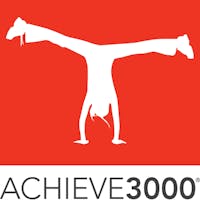“Stay out of jail!” That was the subject line of an email I received shortly after I started in my new role as CEO at Achieve3000.
The sender was one of our implementation managers, who wrote me about his experience bumping into a student at his district’s juvenile court school. “As we got near each other, the young man literally grabbed and hugged me,” my colleague reported. The student said, “This is the LAST time I will walk out of jail because I am a better reader now and more college ready. I’ll never be back in a place like this again, because I’m closer to being ready for a job as a border patrol officer.” My colleague finished his email to me with this: “What we do MATTERS!”
I’ve spent 16 years serving on and chairing the board of the National Dropout Prevention Center (NDPC) and 25 years leading companies that serve schools and students of all kinds. Throughout, I’ve often found myself thinking about students like this one, who ended up in juvenile detention by ninth grade. Or about the ones who act out in class because they’re embarrassed that they can’t read; they’d rather get in trouble than lose face. Or the ones who are so far behind that catching up seems hopeless. Or who stop showing up at school altogether.
I pay close attention to classroom solutions that can meet these students exactly where they are. After visiting literally hundreds of schools and talking with thousands of K-12 educators, students, and parents over two and a half decades, I know that it’s crucial that we strive to connect all students to learning regardless of their needs or levels of readiness.

Making the Connection to Learning Through Differentiation
Connecting this way requires teachers to differentiate instruction—recognizing their students’ individuality and then planning learning experiences with the range of student needs, interests, styles, and preferences in mind. In their book, Leadership for Differentiating Schools & Classrooms, Carol Ann Tomlinson and Susan Demirsky Allan write, “Differentiation is simply attending to the learning needs of a particular student or small group of students rather than the more typical pattern of teaching the class as though all individuals in it were basically alike.”
For more on precision differentiation, check out the infographic, How to Navigate the Needs of (M)any Student(s) So All Roads Lead to Learning, and the eBook, Differentiating Instruction for Acceleration and Equity.
Differentiation is typically described as an approach that incorporates one or more of the following components:
- Assessment—Use whatever you can learn about students to help them to connect to classroom instruction, both at the start of school and through ongoing informal and formal assessment all year long.
- Content—Select and adapt content so students at all levels of readiness can access the same ideas and information.
- Process—Use instructional and language scaffolds, flexible student groupings, and a range of activities that engage different learning modalities to ensure all students are appropriately supported and challenged while they work toward the same objectives.
- Product—Provide varying opportunities and methods for students to demonstrate learning.
- Environment—Optimize your classroom to support independent, small group, and whole group instruction and to reflect the multiplicity of students in your classes.
Knowing the wide range of academic diversity a typical teacher faces in today’s K-12 classrooms, differentiating instruction is an essential approach.

The Power of Differentiation in Practice
This brings me to another story I heard recently from a 10th grade teacher in Florida. She said that her students are able to form deep connections to learning when they access content at their precise, individual reading levels, supported by customizable scaffolding.
Many of my students have been in a remedial or intensive reading class every year since at least the 6th grade. They can be very hard to motivate, because they feel defeated and believe they will always be behind...Reading is hard for these kids; this is what they have always struggled in, but Achieve3000 finally gives them a feeling of success by challenging them without frustrating them…
This connection is enough to start creating a real shift. And once a student starts feeling that shift—from frustration to challenge to success—and realizes he can take incremental steps toward meeting his goals, there’s no stopping him.
For those of you who like numbers, the Florida teacher finished her note to me with this: “My 5th period class made a class average gain of 137 Lexile points!” Indeed, our National Lexile Study shows that students using Achieve3000 as recommended—80+ activities per school year with average minimum 75% correct on their first try—can achieve more than three times their expected Lexile gains in that period. This means students scoring far below college and career readiness expectations can get on track for their grade within three years!

Given my history with the NDPC, it’s important for me to know that the organization I lead helps students who are struggling make that shift. Hearing teachers’ stories and examining the evidence, I’m fully confident that our organization does just that. Whether it’s at the juvenile court school, the Florida high school, or any of the 9,400+ schools that use Achieve3000 worldwide, we know that our core capabilities work. We provide everything schools need for precision differentiation for all kinds of students and teachers, in widely varying educational settings.
Here’s what we’ve identified as the key components for a precision differentiation approach in K-12 schools, several of which are touched upon in the chart below.
- A technology-driven methodology that uses baseline and ongoing embedded assessment to match and re-level students to their “just-right” level of text complexity, “just-on-time” through the school year.
- Thousands of high-interest informational texts, each differentiated at twelve Lexile levels in English and eight in Spanish, plus learning and language scaffolds for intervention, enrichment, and ELL students—together creating equitable access to content and driving classroom collaboration.
- Flexible models of literacy instruction that teachers can adapt based on their site’s goals and availability of tech.
- Research-defined targets for quantity and quality of use to optimize acceleration.
- Customizable delivery options to meet school- and district-specific requirements for success.

When we reach each and every student by using a precision differentiation approach, we see them connect to learning and attain amazing outcomes. And we know that “what we do MATTERS!”



